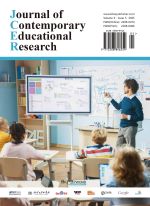Abstract
University courses should have both breadth and depth. However, most courses in universities only focus on the breadth construction, while neglecting the depth construction, resulting in students being unable to apply the knowledge they have learned to conduct research or solve real-world application problems. The students’ high-level abilities are insufficient and not well-trained. Therefore, in this paper, we propose a T-structured course design method to ensure both breadth and depth of a course. The proposed T-structured course design method includes four aspects: T-structured course contents, T-structured teaching activities, T-structured examination formats, and T-structured homework difficulty. By applying our proposed T-structured course design strategy to the course Optimization Algorithms and Intelligent Computing, good results are achieved, demonstrating the applicability of our proposed strategy.
References
Dempster ER, 2024, A Comparative Study of Breadth and Depth of Content in Junior Secondary Biology Syllabi in Four Jurisdictions. International Journal of Science Education, 46(18): 1899–1921.
Perry J, 2024, Depth through Breadth: Teaching Tomorrow’s Researchers. Modern British History, 35(1): 66–70.
Li G, 2024, Exploration of Quality Issues and Countermeasures in Undergraduate Teaching in Chinese Universities: Based on the Perspective of Students’ Perceived Experience. Education and Culture Forum, 16(04): 98–108.
Huang P, 2023, Analysis and Improvement Exploration of Teaching Problems in Undergraduate “Computational Methods” Course under the “Golden Course” Standard. New Curriculum Research, 2: 21–23.
Tang B, Gong Y, Cen W, 2022, Cultivation of Undergraduate Students’ Creative Thinking Ability Based on Problem-Based Teaching Method: Practice from Two Teaching Classes of “Logistics Finance” Course. Logistics Technology, 41(11): 134–138.
Ouyang W, Xu W, Wang J, et al., 2024, A Dynamic Path Planning Method Considering Sea Area Division for Offshore Wind Farm Maintenance, 2024 5th International Conference on Big Data, Artificial Intelligence and Internet of Things Engineering (ICBAIE 2024), Shenzhen, China.
Xu W, Min Y, Wang J, et al., 2024, Offshore Wind Farm Maintenance Scheduling with Integrated Genetic Algorithm Model, 2024 4th International Conference on New Energy and Power Engineering, Guangzhou, China.
Gu S, Wang J, Xi Q, et al., 2024, A Two-Stage Self-Adaptive Method for Designing Optimal Neural Networks for Various Time Series Datasets, 2024 11th International Forum on Electrical Engineering and Automation (IFEEA 2024), Shenzhen, China.
Gu S, Xi Q, Wang J, et al., 2024, TCN-GAWO: Genetic Algorithm Enhanced Weight Optimization for Temporal Convolutional Network. Journal of Mechanical Design, 146(10): 101703.
Deng J, Wang D, Gu J, et al., 2025, SGO: An Innovative Oversampling Approach for Imbalanced Datasets Using SVM and Genetic Algorithms. Information Sciences, 690: 121584.
